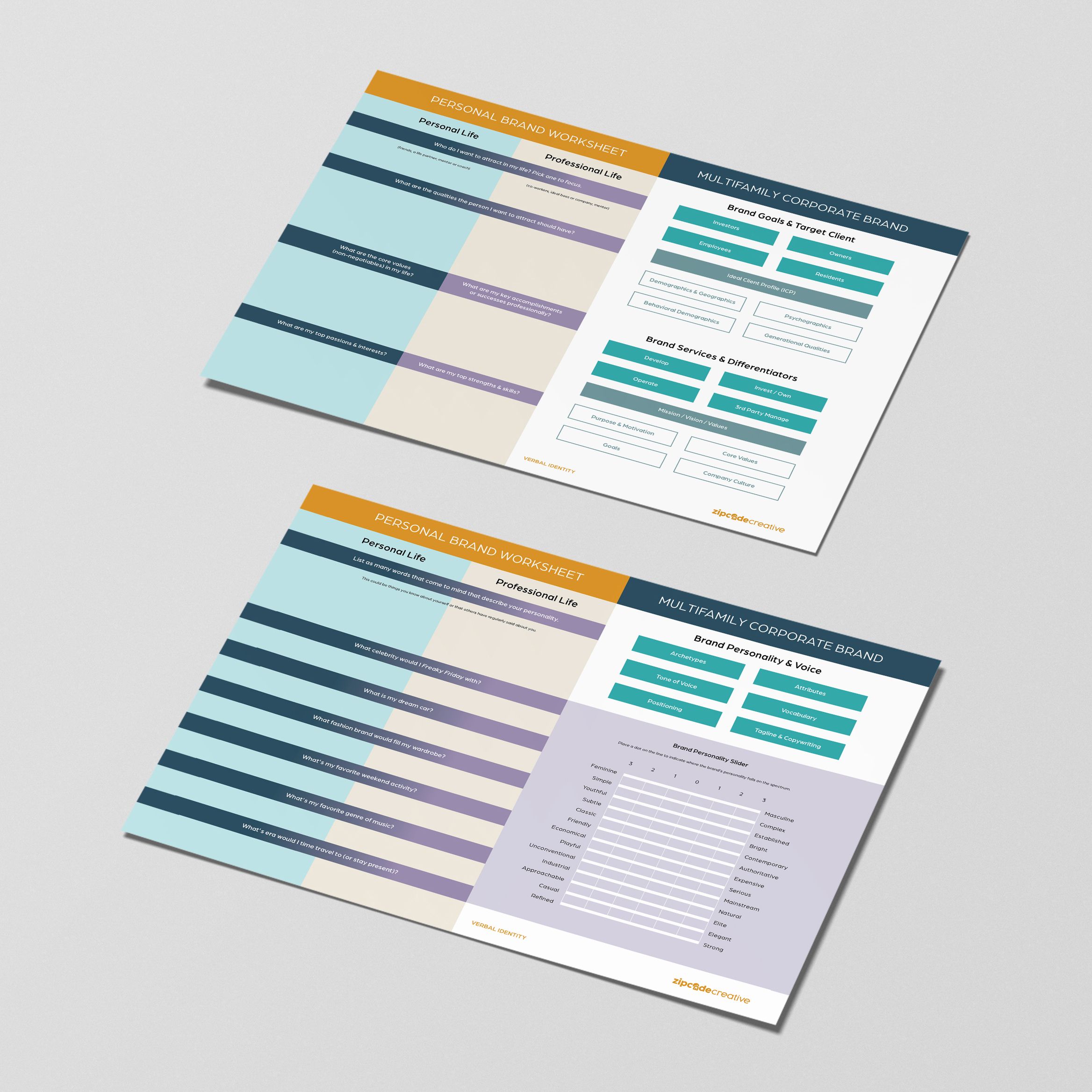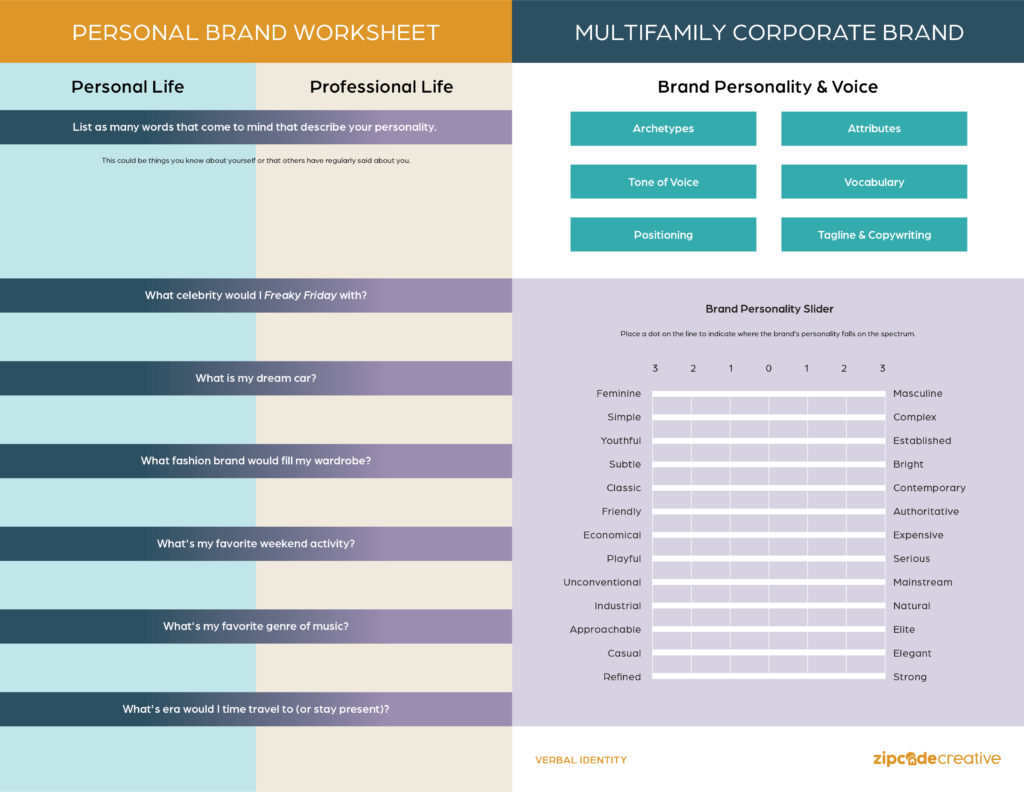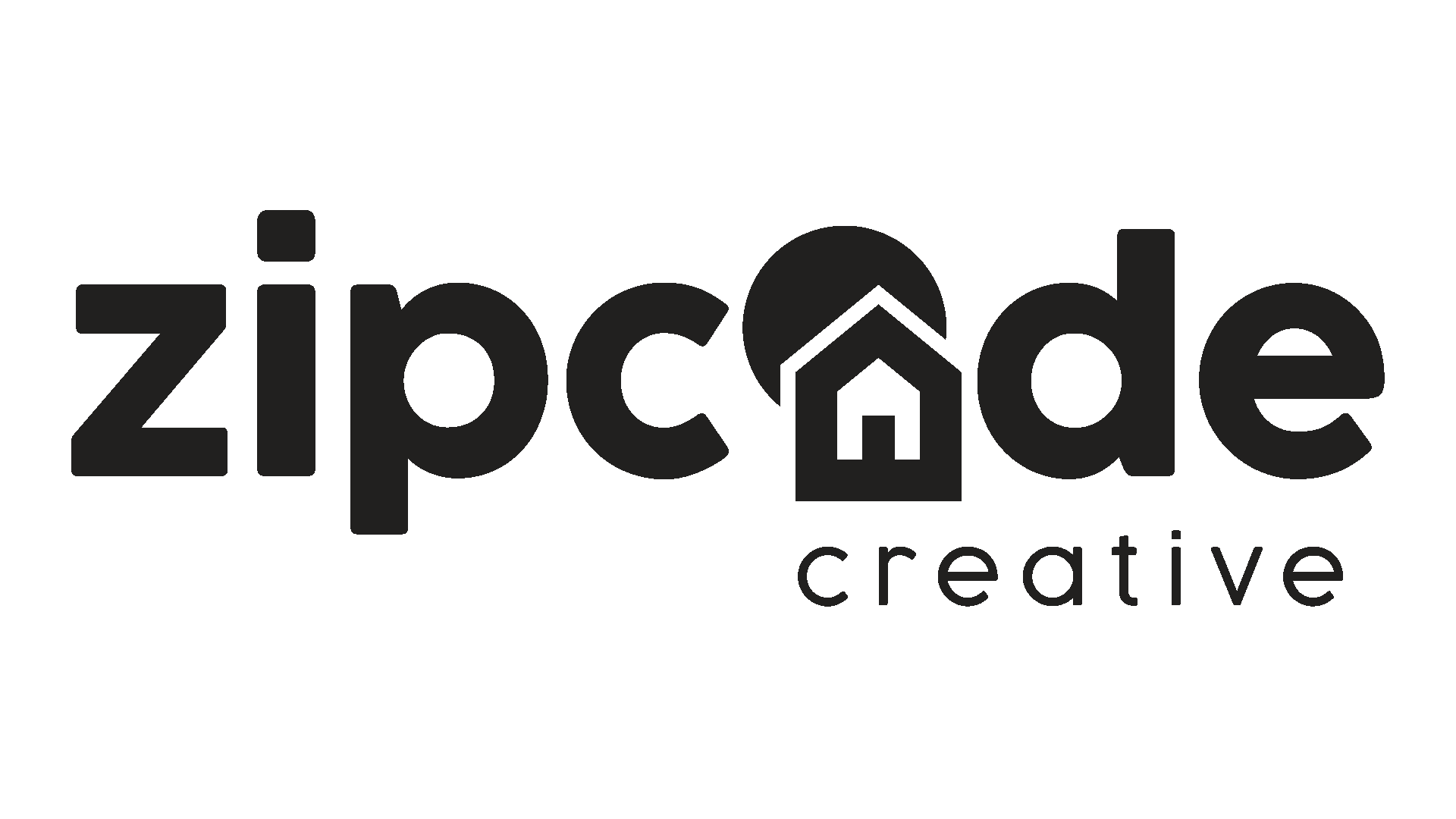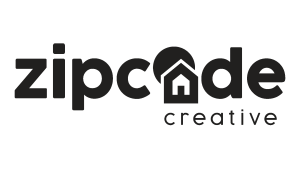
Create Your Own Personal Brand Voice
Stacey Feeney
At Zipcode Creative, we know that brand voice is tricky—how do you determine it, and how do you stay consistent? What is the right path to take? Take your own personal brand voice for starters.
What everyone really needs is a worksheet. Hard-hitting (but fun) questions to guide a brand into its truest shape.
Walk through the various bits and bobs with us—and note how it may shift based on the personal or professional side of things and see how your brand voice can come alive.
Attraction & Audience
Who do you most want to attract in your life?
For the personal side, you’ll focus more on who you share your life with in all its ups and downs, so: a life partner, a mentor, or a coach. If you want to keep things professional with this question, think of the people you’ll see almost every day: co-workers, boss or company, or mentor.
A consideration that comes close on the heels of those questions is:
What qualities should the people I want to attract have?
When you think through who you want to attract—and what qualities they have, this gives some insight into:
- What you feel you may be lacking (something to complement you)
- Who you think is most desirable to be around
Core Values
What are the things most vital to living your life the way you think it ought to be lived? Is it honesty? Gratitude? Entrepreneurial spirit? Giving? What things are at your very core? Those are your core values—the things that you would still cling to if everything else got stripped away.
For the professional side, it’s good to investigate your key accomplishments. What has been your greatest success in your work? It may be small to some, but it’s vital to choose something that felt like a big deal to you, whether it was learning something completely new, or completely shattering a previous goal you’d set.
Passions and Skills
There’s so much more to any person than what they accomplish. Look at your top passions and interests. This shows your willingness to learn something new, and shows your interest in things that are maybe typical, or just give more vibrancy to who you are—which is all part of your brand.
Your strengths and skills as a professional also help give color and shape to the professional side of your personal brand. A top strength is something that has maybe been part of your professional journey: You got better at managing others because you had a boss that wasn’t the best, and you learned how not to do things. Maybe you have excellent budget skills because your parents brought you up to spend, save, and give, and your ability to make a budget work is highly desirable and something you enjoy. Again, all part of your personal brand, even if it shows up with you at work.
Personality
This is the most fun part. Getting to know who you are, based on your own perception and what others have said about you, gives a clear picture of how you act, how you’ll likely act in specific situations, and your usual way of doing things. Every one of the following questions narrows down the details a little further.
Descriptors – What words describe your personality? This can point to what you know about yourself and what others have said about you—both personally and in your professional sphere.
Celebrity Swap – Who would you want to swap places with (think Freaky Friday)? Who do you find fascinating, and why?
Dream Car – Color, year, details. The more specific you are, the better understanding of your personal and professional brand.
Fashion Forward – A favorite fashion brand (and why) brings insight into the aspirational. Whether you prefer funky or modern or classic, this says a lot about you!
Weekend Plans – What’s your ideal or favorite weekend activity? If you mostly want to play board games, drink tea, and knit, that tells a different story than if you want to go four-wheeling, hunting, and grilling.
Music Match – Your favorite genre of music gives a little more color to your personal brand. Upbeat classical? Old timey country? 90s R&B? Post-modern shoegaze pop? It all puts different shades on your brand.
Your True Era – If you could time travel—which era would you aim for? Or would you stay right here, right now? This has more to do with your interests rather than your ideals, likely, but gives an interesting spin on what you value and what you’re curious about.
The Worksheet
Here is your worksheet, in two pages – just save the images!


Corporate Brand Voice
HOW TO
Now that you’ve seen the research and understanding that goes into developing a personal brand (whether taking the personal or professional angle) it might be easier to understand how a brand voice is strategized.
You’d consider and clarify:
- Brand Goals (similar to personal hopes/dreams)
- Target Client/Customer Persona (who you most want to attract)
- Your Brand Differentiators
- Mission/Vision/Values
- Purpose
- Core Values
- Goals
- Company Culture
- Brand Personality & Voice
- Archetypes
- Attributes
- Tone of Voice
- Vocabulary
- Positioning
- Tagline/Copywriting
- Brand Personality Slider
- Note: The cool thing about the slider is that you don’t have to fully skew one way or the other, you can be balanced between casual and elegant—or you can be relatively complex without going full complicated
IMPLEMENTATION
It’s likely that your corporate brand voice was (or will be) created in a small circle of “trust” in the company. But when it’s time to get everyone else bought in and trained, that full brand implementation (and carrying out your brand voice) is going to be intrinsic to your success with continuity and consistency.
How do you teach others to embody your brand voice? If you’ve created a “founder” brand, wherein the personal brand and corporate brand are nearly one and the same—you can train your team members directly on the voice of your founder.
At Zipcode Creative, for example, we’re a founder brand. That means that Stacey Feeney is Zipcode Creative, and everything is written from her personality and perspective.
This looks like:
- Quick, friendly email replies: “You got it!” or “Roger that!”
- Lots of exclamation points in email communications (with rereading to make sure it’s not over the top)
- Demeanor focused on service—to help clients with anything needed, big or small
- Being honest, open, and transparent
Stacey is front and center, and everyone is trained in her voice—that keeps things consistent and trustworthy.
(Keep in mind: that’s just one approach!)


